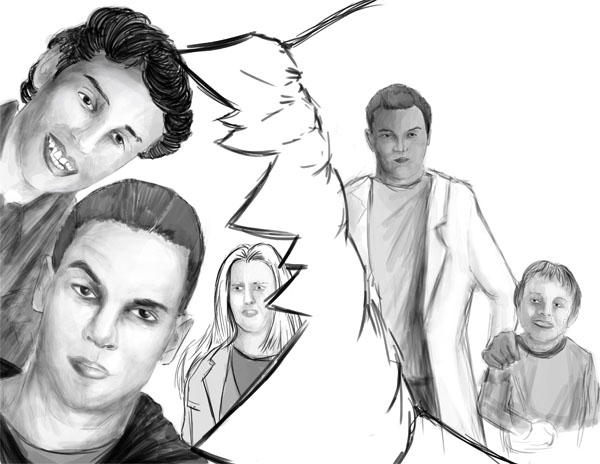In the news, in movies and on TV, teens are portrayed negatively. Almost always characterized as without guidance, consideration or respect for others. Almost always wild, untamed beasts who cannot be changed. This perspective is simply not true. Some of society’s brightest and kindest individuals are teens, yet this negativity has been perpetuated by all sorts of media.

The growth of these stereotypes can be attributed to the common idea that teens are destructive and malicious. Supposedly, for anyone who didn’t fit the typical teen stereotype, a day’s experience was a crapshoot, filled with danger and unpredictability.
In middle school, I always held the notion that none of this could be true, that teens weren’t all as vicious as they were on TV. Thankfully, I was mostly correct.
Despite all adolescent emotions, as well as the academic pressures that come from living in Palo Alto, students here have collectively been able to create a positive and inclusive environment.
While cliques are still predominant on the social scene, and there are areas on campus where different groups congregate, these groups seem to coexist in a symbiotic manner.
In other words, many students accept differences and have adapted the philosophy of “live and let live.” Palo Alto High School students are doing a good job of fighting to show the good in teens, but we still have a long way to go in changing public opinion.
When teens act immaturely or maliciously, many people play the “teens will be teens” card. To revert to this stereotype is an insult to a large population of intelligent young people.
There is a lot of distrust toward teens, which creates a positive feedback system of continual tension.
It takes a lot less effort and brain power to expose the harmful actions of a bully than to praise an outstanding student. For example, a drama chronicling the struggles of a high school clique (ahem, “Pretty Little Liars”) will attract higher ratings than a show about kids who engage in community service.
It’s a sad part of human nature to look for the bad in people instead of praising them for the good they do. Sure, there are cases across the country and the world that give teens a bad rap, but these relatively few incidents do not represent a whole population. It’s important that society learns to remember the falsity of these portrayals.
The media shape the public’s idea of high school with a skewed and largely dramatized version. While it’s hard to argue that we should get rid of shows to change the public opinion, maybe a disclaimer would help: This isn’t reality, and the replication of the behaviors presented here is beneficial to no one.
To fix the current stigma against teens, we need to broadcast everything positive that is happening on a more widespread level, because when it comes down to it, a positive attitude can only do good.
